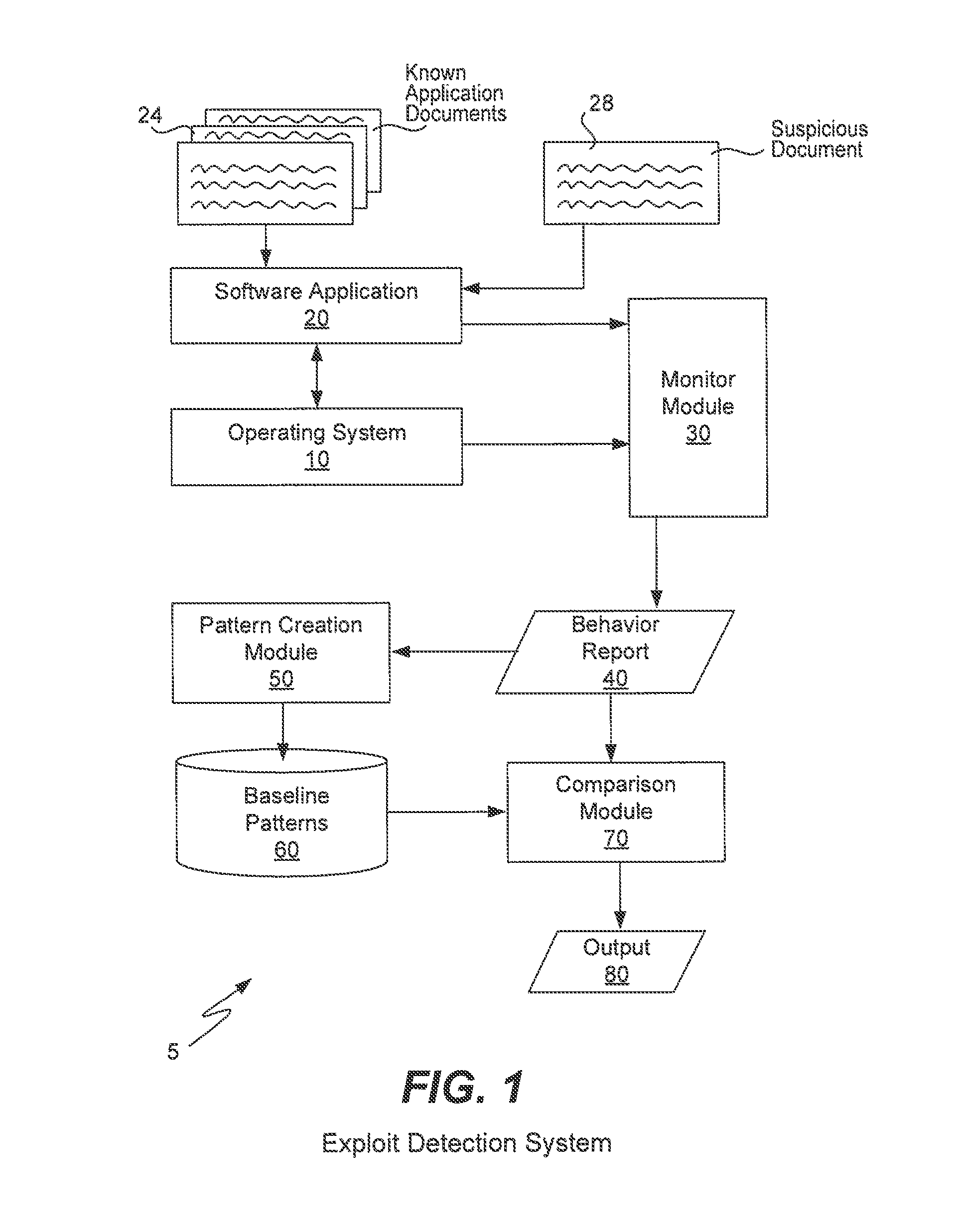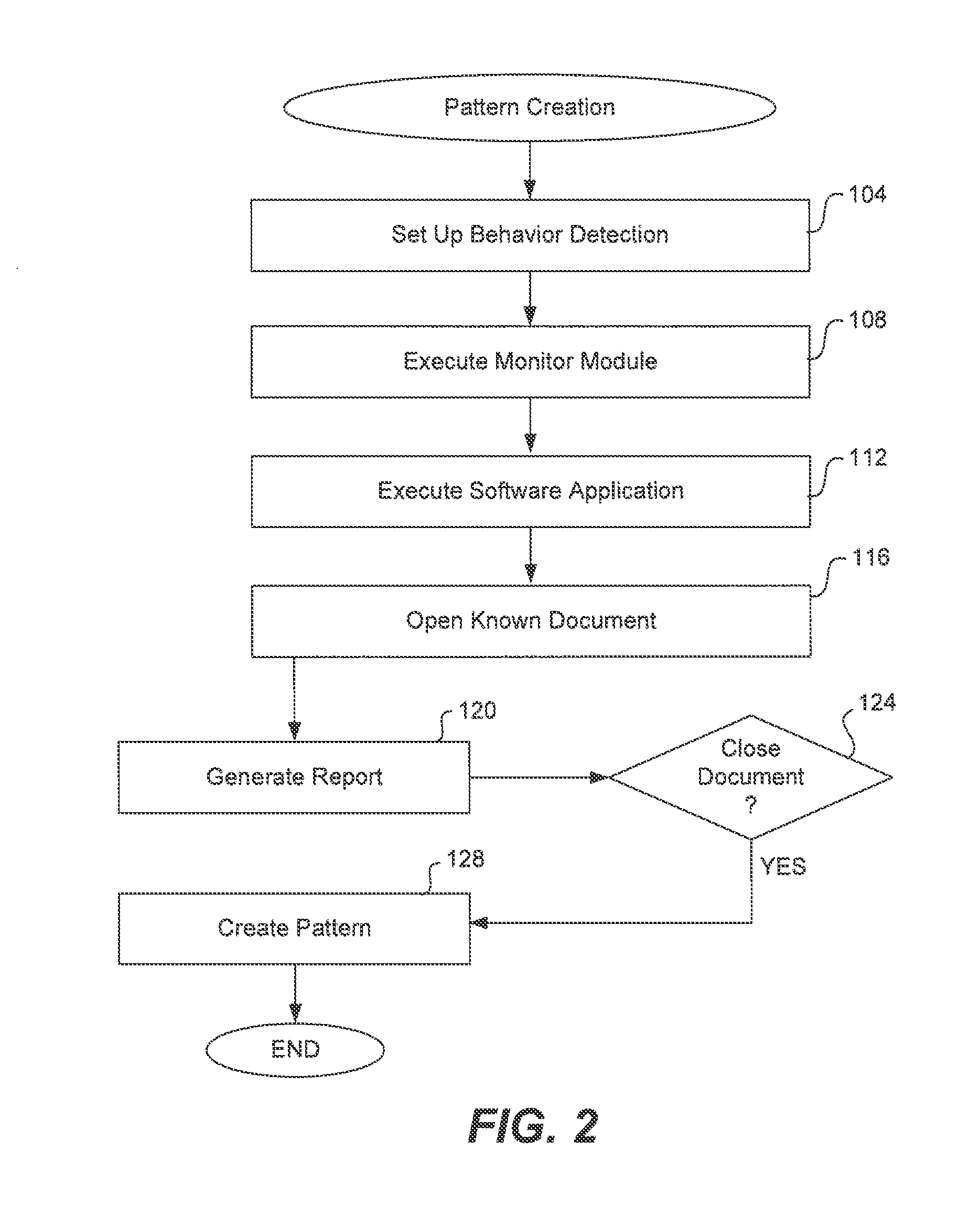Document exploit detection using baseline comparison
a document exploit and baseline technology, applied in the field of document exploit detection, can solve the problems of user-created file types, computer system infected, and computer system attack becoming more sophisticated and targeted
- Summary
- Abstract
- Description
- Claims
- Application Information
AI Technical Summary
Benefits of technology
Problems solved by technology
Method used
Image
Examples
Embodiment Construction
[0023]In order to detect known or unknown document exploits, the present invention is able to record the baseline behavior of both known normal and known malicious documents being opened and executing within a corresponding software application. Both the normal and the malicious behavior can be extracted into baseline patterns which may then be compared to the behavior of a suspicious document that is opened and executes within the same corresponding software application. If any abnormalities are detected, then an alert may be raised that a document exploit has been detected.
Computer System Block Diagram
[0024]FIG. 1 is a block diagram of a computer system 5 for implementing the present invention. The present invention may be implemented upon a variety of computers (including computer system 900) such as laptops, desktops, server computers, backend computers, user computers, etc. Executing upon a computer is any suitable operating system 10 upon which is executing one or more softwar...
PUM
 Login to View More
Login to View More Abstract
Description
Claims
Application Information
 Login to View More
Login to View More - R&D
- Intellectual Property
- Life Sciences
- Materials
- Tech Scout
- Unparalleled Data Quality
- Higher Quality Content
- 60% Fewer Hallucinations
Browse by: Latest US Patents, China's latest patents, Technical Efficacy Thesaurus, Application Domain, Technology Topic, Popular Technical Reports.
© 2025 PatSnap. All rights reserved.Legal|Privacy policy|Modern Slavery Act Transparency Statement|Sitemap|About US| Contact US: help@patsnap.com



